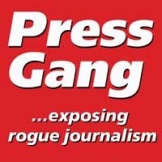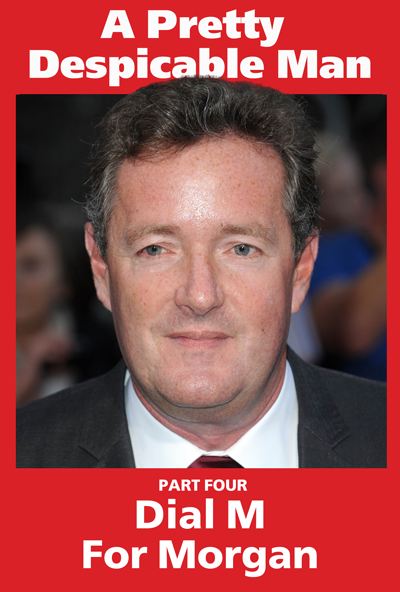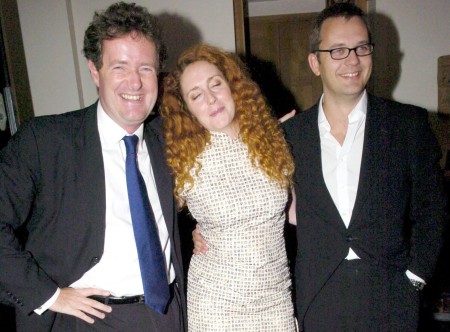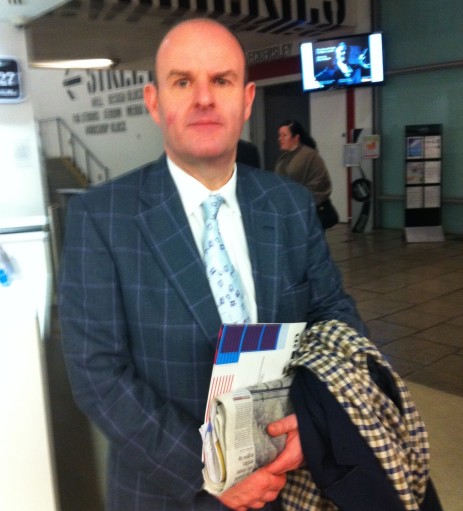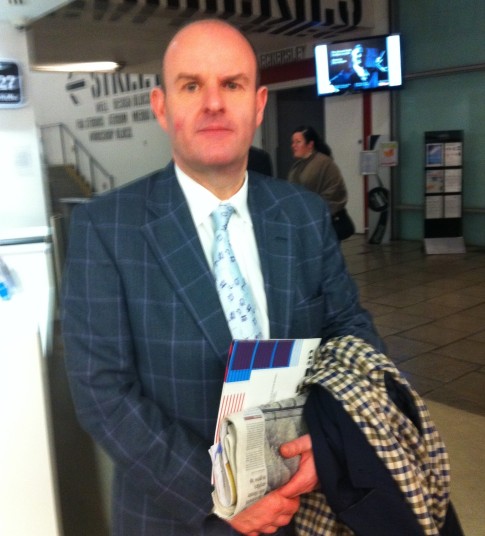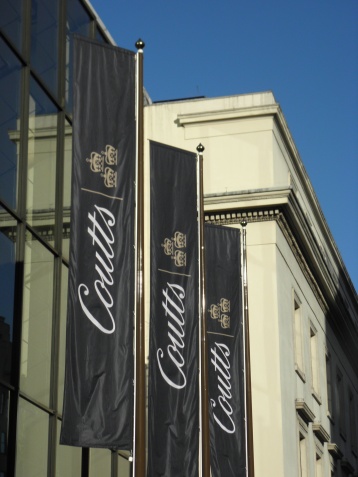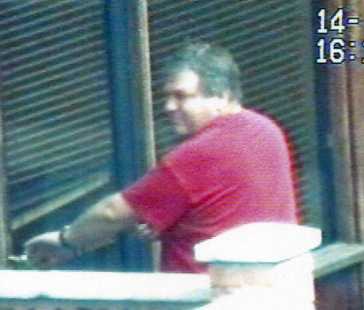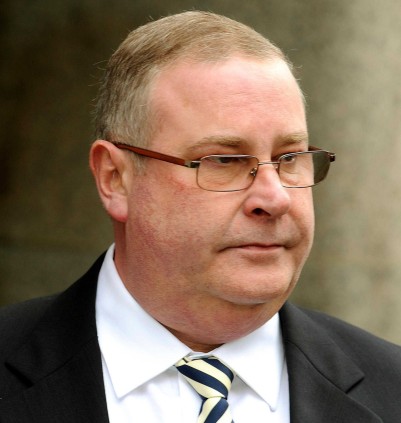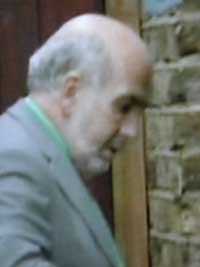
FEBRUARY 2017 was a bad month for one of the prime suspects in the unsolved murder of private eye Daniel Morgan.
Jonathan Rees — boss of the No 1 Corrupt Detective Agency — lost his High Court action against the Metropolitan Police for malicious prosecution and misfeasance in public office.
He brought the action after his criminal trial for the murder collapsed in 2011 — and after he’d spent 22 months in prison.
He’d been hoping to make a substantial killing in compensation.
Private Eye, which puts the total cost of the case at more than £1.5 million, says Rees will appeal.
If he fails, he faces a huge legal bill — on top of other mounting debts.
He may have to sell his £1 million house in Surrey …

THIS 5,000 word article is the fifth instalment of an investigation into Southern Investigations that started more than a decade ago.
For 30 years the Daniel Morgan murder was largely ignored by the UK newspapers and broadcasters.
In part, this was because the News of the World was in a commercial relationship with one of the prime suspects in the case.
Press Gang is independent and does not carry advertising. It runs at a loss and the only source of income is donations.
If you feel articles like The Business Of Murder should see the light of day, you can make either a one-off gift or make a commitment to a small monthly donation.
♦♦♦
WHEN MR Justice Mitting dismissed Rees’ action on February 21, it was a major blow to the murder suspect.
He’d funded the action by doing a deal with his solicitors, Freedman Alexander of Ewell in Kent.
If he won, their costs would be paid by the Metropolitan Police.
If he failed, their fees would be secured by a mortgage on Rees’ four-bedroomed property in Weybridge, Surrey.
This charge was registered in November last year.
The amount is not known.
The Weybridge property is worth a million pounds but it already has two other mortgages .
Rees and his partner Margaret Harrison — a former lover of the murdered Daniel Morgan — bought the detached house in March 2006 for £440,000.
This was shortly after Rees had finished serving a seven year prison sentence for conspiring to plant cocaine on an innocent mother so she would lose custody of her child.
Rees and Harrison’s previous home in Thornton Heath, Croydon was sold for £290,000 in May 2005.
The couple took out a Bank of Scotland mortgage to pay for the new Weybridge property in 2006 and added a second — from Skye Loans Limited — shortly after.
Press Gang understands Rees was arrested in 2006 by Scotland Yard’s Financial Crimes Unit in connection with a mortgage application on this house.
The Crown Prosecution Service decided not to charge him.
In addition to the three mortgages, there are also a series of court orders on the property.
In April 2008 the debt collection company Lowell Portfolio obtained judgment against Rees at Kingston County Court for an unspecified debt.
The same court granted Barclaycard a similar judgment against Rees in May 2008.
Again, the debt is not stated.
Another judgment was made against Rees at Cardiff County Court in favour of Link Financial Ltd for another debt.

THE STORY SO FAR …
PRIVATE EYE Jonathan Rees (left) should have been an immediate suspect in the murder of his business partner Daniel Morgan in 1987 — the two men were love rivals and were arguing about a botched security operation. But Scotland Yard detective sergeant Sid Fillery (right) kept that crucial information — as well as his close friendship with Rees and his own involvement in the ill-fated security operation — from the murder squad for several vital days. For the events leading up to the murder, the early contaminated murder inquiry, the sensational inquest which saw Rees’s book-keeper accuse him of planning the murder, see Part One — An Axe To Grind. The second part of The No 1 Corrupt Detective Agency — Rogue Journalists & Bent Coppers — reveals how Rees and his new partner in the Southern Investigations detective agency, Sid Fillery, became key players in the unlawful sale of confidential police information to Rupert Murdoch’s empire, especially the News of the World. Attempts by anti-corruption detectives to end this corrosive trade came to nothing. Part three — Porridge — tells the story of how Jonathan Rees was gaoled for 7 years after he was caught conspiring to plant cocaine on an innocent mother. When indecent child abuse photos were found on Sid Fillery’s computer — he was ordered to sign the Sex Offenders Register — the detective agency collapsed. In 2008 Rees and Fillery were finally charged in connection with Daniel Morgan’s death: Rees with murder and Fillery with attempting to pervert the course of justice. Part four — Getting Away With Murder — tells the story of how the case dramatically collapsed …
Photos: PA
Finally, the Manchester branch of the law firm Pannone obtained judgment at Kingston County Court in February 2014.
This was for the recovery of £12,247 in legal costs.
Pannone would not comment on the case.
♦♦♦
REES’ ATTEMPT to make a financial killing from the Metropolitan Police reached its climax in the Royal Courts of Justice earlier this year.
The case opened on January 17.
The judge was the experienced Sir John Mitting.
Rees was joined by three other claimants.
Two of them — his former brothers-in-law Glenn and Garry Vian — had been also been accused of the murder of Daniel Morgan.
They were joined by former detective sergeant Sid Fillery, accused of attempting to pervert the course of justice.

SUSPECTS
AN ARTIST’S impression of the five men charged in connection with the Daniel Morgan murder in 2008 — from left to right, Jonathan Rees, Glenn Vian, Sid Fillery, Garry Vian and James “Jimmy” Cook. The prosecution case was that Jonathan Rees ordered the killing, Glenn Vian carried out the execution, his brother Garry was the look-out and Jimmy Cook was the getaway driver. Detective sergeant Fillery covered their tracks. The case finally collapsed in 2011 and all except Jimmy Cook sued the Metropolitan Police.
Illustration: Elizabeth Cook, PA
One of the five men originally charged in connection with the murder — James “Jimmy” Cook — did not take part in the civil action.
The remaining four claimed the prosecution against them was motivated by malice by Scotland Yard in general and in particular by the man who led the investigation — Detective Chief Superintendent (DCS) Dave Cook.
In addition, they claimed DCS Cook was guilty of misfeasance in a public office.
They sought compensation — in the case of Rees and the Vians, including the 22 months they spent on remand.
In the case of Sid Fillery, for the three months he spent in prison before he was released on bail.
♦♦♦
REES, FILLERY and the Vians based their claim on the way police handled two witnesses.
One was a professional drug dealer called James Ward.
The claimants argued that Ward had been coached in his evidence by DCS Cook.
They also claimed police deliberately suppressed material about Ward which was favourable to the defence.
Ward had a history of informing on other criminals to get reduced prison sentences.
David Whitehouse QC, for Glenn Vian, said Ward:

DCS DAVE COOK
THE EXPERIENCED murder detective was the senior investigating officer in the fourth and fifth attempts to bring Daniel Morgan’s murderers to book. When he left the Met in 2007 to join the Serious Organised Crime Agency he agreed to continue as the lead investigator in the Daniel Morgan case. He retired in 2013.
Photo: PA
” … is a career criminal who has been able to remain active in crime by playing the informant — he has had relationships, including financial relationships, with police officers.”
He added he “has given information to the police, some of it true some of it not true.”
“The result is the police have been prepared to make representations to judges to seek lighter sentences when he is caught.”
In 1987 — the year Daniel Morgan was murdered — Ward was gaoled for two years instead of the expected seven because of the help he’d given police.
Ward knew Rees, Fillery and the Vians.
By the early 2000s he’d become a millionaire as part of a major drugs smuggling ring which also included Garry Vian.
In 2004 Ward and Garry Vian were caught during Scotland Yard’s Operation Bedingham and remanded in custody in August 2004.
At this point Ward decided to see if he could secure another reduced sentence by turning informant.
He chose the Daniel Morgan murder as his bargaining tool.
In February 2005 he met DCS Cook but made it clear he would not give evidence against Rees and the other suspects:
“That will resolve (sic) in someone’s death, my wife, son, grandchildren,” he said.
“Not worth it,” he concluded.
He was only prepared to give intelligence.
He told DCS Cook that the motive for the murder centred on a multi-million pound drug-dealing ring.
The following exchange took place:
Ward: “Where shall I start?”
DCS Cook:
“Tell me what you know. I’ll give you a head start. It was Glenn with the axe, Garry was there and Jimmy with the car.”
The claimants’ team argued this prompt meant Ward’s evidence had been “deliberately contaminated by [DCS] Cook”.
Judge Mitting rejected the claim.
At that stage, he noted:
“Cook was gathering intelligence not evidence.”
Ward later agreed to give evidence.
Once he was accepted as an “assisting offender” a “sterile corridor” was created between the detectives de-briefing him and the Daniel Morgan murder team.
This was to prevent murder squad detectives influencing witnesses.
The claimants team argued that DCS Cook also had the opportunity to prompt Ward by phone.
Again, Mitting was unimpressed:

SIR JOHN MITTING
THE HIGH COURT judge heard the civil action brought by Jonathan Rees and the other claimants against the Metropolitan Police.
” … it overlooks the fact that Ward was in prison and so the opportunity for unrestricted and unrecorded phone calls either did not exist or was so diminished as to make the possibility highly unlikely.”
Mitting accepted that the de-brief of Ward was a “textbook” exercise.
♦♦♦
IN JULY 2005 Ward was given a 17 year sentence for the Bedingham offences — Garry Vian was sent down for 14 years.
But Ward’s willingness to give evidence in the Daniel Morgan case saw his sentence drastically reduced.
In March 2007 his 17 year sentence was reduced to five years as a direct consequence of his willingness to give evidence in the Daniel Morgan murder trial.
Part of his de-briefing included “cleansing” his reputation by admitting any criminal activity not known to the police.
He pleaded guilty to a further 13 drugs offences and asked for another nine to be taken into consideration.
For these crimes he was sentenced to a further three years in prison.
Investigators estimated that Ward had made £3.7 million from drugs smuggling.
A separate Proceeds of Crime investigation was also carried out.
Ward was eventually ordered to surrender £633,000.
There was also a money laundering investigation which involved Ward and his wife.
This investigation generated a substantial amount of information including 18 crates of documents which were made available to the murder investigation in 2007.
They were not examined by the murder team — and the prosecution did not disclose them to the defence.
These files included new and damaging evidence about Ward’s activities as an informant.
Then, in 2010, even more damaging documents turned up.
These showed Ward, who was supposed to have “cleansed” his reputation by revealing all his criminality, hadn’t told everything.

NEW SCOTLAND YARD
MORE THAN 750,000 pages of documents have been generated in the Daniel Morgan murder case. The failure to track down some of these papers proved to be a major liability in the trial of Jonathan Rees and the other suspects …
The documents included what appeared to be an admission that he ordered the murder of a drug dealer.
In the criminal case, the judge ruled that Ward could not give evidence.
In this year’s “malicious prosecution” action, the claimants’ legal team argued that police had deliberately suppressed this undisclosed material.
Judge Mitting accepted there were errors which displayed “a want of due diligence.”
But he added:
“I reject the suggestion that [detectives] deliberately suppressed material which they knew or believed might have undermined Ward’s evidence.”
♦♦♦
THE SECOND witness was another criminal, Gary Eaton.
The claimants in the “malicious prosecution” action argued that his evidence was also contaminated.
Eaton was a volatile, unstable character with a long history of mental problems.
He had an alcohol problem, a history of lying and often resorted to violence, both against himself and others.
When he met murder investigators in July 2006, he claimed he was offered £50,000 by James “Jimmy” Cook to carry out the murder.
Daniel Morgan was killed because he’d found out about a drugs and money laundering operation.
Sid Fillery “set it up,” Eaton claimed, and Jonathan Rees knew about it.
At this meeting it was clear Eaton either didn’t know about the Vians’ alleged involvement — or wasn’t prepared to say.
In the High Court action, counsel for the claimants pointed to a question from DCS Cook which they said showed him prompting Eaton.
DCS Cook said:
“Give me the names of the brothers.”
Eaton couldn’t identify them.
When Eaton was accepted as an “assisting offender” he was passed to other officers, not connected with the murder investigation, to carry out the debriefing.
As with Ward, there was supposed to be a “sterile corridor” between the de-briefers and the murder team.
In fact, there was constant mobile phone contact between Eaton and DCS Cook.
In September 2006 Eaton dramatically changed his testimony.
He now said that he had been at the Golden Lion at the time of the murder — he was in the pub when he was asked to go outside.
He said he saw Daniel Morgan’s body on the ground.

MURDER SCENE
THE PUB in Sydenham where the murder took place. Gary Eaton’s late admission that he had been there was not believed by the judge in the criminal case.
Photo: PA
He said Jimmy Cook was in a car which then drove away.
He also now remembered that Glenn Vian was involved — but still couldn’t remember the name of the other brother.
During this period, there were many phone calls between Eaton and DCS Cook — in breach of the “sterile corridor”.
There were several reports from other officers expressing concern about these contacts.
In the pre-trial hearings in the criminal case, DCS Cook prepared a schedule of the phone calls as he could remember them.
The judge in that case, Sir David Maddison, stated:
“The telephone records now available … indicate direct communication between DCS Cook and Mr Eaton by text and / or phone call on 36 days during this period.”
“… the final version of DCS Cook’s schedule refers to only six days …”
The judge did not find Eaton’s version of events at the Golden Lion credible — and concluded he wasn’t there.
Judge Mitting, in the High Court action, was blunt:
“By prompting a potentially unreliable witness to implicate Glenn and Garry Vian in the Morgan murder and then to conceal the fact that he had done so from the CPS and prosecuting counsel, [DCS] Cook did an act which tended to pervert the course of justice.”
♦♦♦
DCS Cook has always denied coaching Eaton — he says all the calls concerned his welfare and his often turbulent personal life.
Eaton, it was argued, was not a typical witness.
Usually, assisting offenders were in prison, seeking to give evidence against other criminals in return for a reduced sentence.
Eaton was a free man who not only volunteered information about the Daniel Morgan murder but also confessed to a large number of criminal offences.
He also surrendered £80,000 which he said was the proceeds of his criminal activities.

WATCHED …
JONATHAN REES photographed in the late 1990s outside the offices of Southern Investigations in Thornton Heath. Rees did not realise the premises were bugged — detectives heard him planning to plant drugs on an innocent mother as part of a plot to prove she was an unfit mother. He was gaoled for seven years …
Photo: Metropolitan Police
(In April 2008 Eaton pleaded guilty to a raft of offences and was gaoled for three years.
The offences would normally have attracted a sentence of 28 years.)
Because he was not in prison, it was impossible to observe a sterile corridor — and it wasn’t just DCS Cook he was contacting.
Judge Mitting also noted, in another part of his judgment:
” … I am not persuaded that (DCS) Cook intended that Eaton should give false evidence.”
“I believe it to be inconceivable that Cook gave Eaton a detailed account of what he believed had happened knowing that Eaton had not witnessed it.”
“I strongly suspect that Eaton had said something to Cook which prompted him to believe that Eaton may have been there.”
“The danger in this was that it encouraged an unstable individual with severe personality and psychiatric problems to say what he thought Cook wanted him to say, whether or not it was true.”
Former DCS Cook, by now retired, did not give evidence in this year’s High Court case.
He declined to comment for this article.
♦♦♦
JONATHAN REES was confident he would win the High Court case for “malicious prosecution.”
But it wasn’t a foregone conclusion.
When the murder trial collapsed in 2011, Judge Maddison made it clear the case was properly brought.
There were, he said:
” … ample grounds to justify the arrest and prosecution of the defendants.”

FLOWERS FOR DANIEL
DANIEL’S OLDER brother Alastair and his mother Isobel lay flowers on the spot where Daniel died. It was only the family’s dogged determination that forced Scotland Yard to make a determined effort to catch Daniel’s killers …
Photo: PA
Mitting said that in order to prove they’d been the victims of a “malicious prosecution” the complainants had to prove three things:
— first, that it was the police who were responsible for the prosecution.
In other words, if the Crown Prosecution Service had known DCS Cook had prompted Eaton, the four would not have been charged.
— second, even if it was the police who were the driving force, the claimants also had to show that there was no “reasonable and probable cause” to charge them.
— finally, they had to show that DCS Cook’s actions were motivated by malice.
Judge Mitting found that the claimants case for “malicious prosecution” fell at the first hurdle.
It was not the police who took the decision to prosecute — it was the Crown Prosecution Service (CPS).
The only thing the CPS was not told about was the extent of the calls between DCS Cook and Gary Eaton.
But — even without Eaton — there was plenty of other grounds to prosecute.
Mitting pointed out that, as early as 2002, the opinion of a leading CPS barrister was clear.
The judge quoted a report, written by DCS Cook but accepted as accurate, which said the barrister:
” … was satisfied that we now know the identity of those responsible for Daniel Morgan’s murder but that the evidence available did not meet the threshold to enable a prosecution to be commenced.”
Mitting ruled that the CPS brought the prosecution — and the “malicious prosecution” argument fell in the case of all four claimants.
♦♦♦
JUDGE MITTING went further.
He added that, even if he had found that it was the police who were responsible for the prosecution, the claimants still had to prove there was no “reasonable and probable cause” to bring the case.
There was, he concluded, “reasonable and probable cause” to charge Rees and the Vians.
He examined the evidence against each:
Jonathan Rees
“The undisputed starting point for the case against Rees,” Mitting noted, was the fact he arranged the fatal rendezvous with Daniel Morgan.
In addition, “inconsistencies” in his accounts of his movements and telephone calls on the night of the murder were evidence Rees had something to conceal.
Kevin Lennon, Rees’ book-keeper, said Rees had told him on several occasions he planned to have Daniel Morgan murdered.
The “key evidence” was that of Andrew Docherty, the former partner of Glenn and Garry Vian’s mother, Patricia.
He worked occasionally for Rees and Fillery and, on one occasion, saw Rees give Glenn Vian £8,000 in cash which Glenn told Docherty was part-payment for the murder.
Glenn Vian
James Ward said that in 1993 or 1994 Glenn Vian told him he had killed Morgan and Jimmy Cook was the getaway driver.

AXEMAN?
GLENN VIAN was the man the prosecution claimed had murdered Daniel Morgan. His defence team argued that Scotland Yard had failed to follow up 40 other possible suspects …
Photo: PA
Glenn called it the “Golden Wonder murder” because Daniel was holding two packets of crisps when he was slaughtered.
Ward said that in 2001 or 2002 he was in Garry Vian’s kitchen when a violent incident took place.
Also pesent were Glenn and Garry Vian and Jonathan Rees.
There was an argument about Rees’ ex-wife who was the sister of the Vians.
Ward claimed that during the row Glenn Vian picked up a knife and cut Jonathan Rees across the face.
Ward said that Garry Vian then said to Glenn:
“That’s fucked that — I was going to ask him for some more money off the Morgan thing.”
There was supporting evidence in the form of a bugged conversation between Glenn Vian and his brother Garry in October 2002 about shooting someone.
Background noises suggested they had a shotgun in their possession.
Judge Mitting said:
“I have heard the relevant portion of the recording and do not accept that an innocent construction can be placed upon it.”
“This was admissible evidence of a propensity on the part of both to use lethal violence.”
Garry Vian
In addition to the evidence about the shotgun, another witness claimed Garry Vian told him he was present during the murder.
A man called Terry Jones, who knew the Vians, said Garry Vian had told him Daniel Morgan had been murdered because he was looking into the drug-dealing operation — and knew too much.
Sid Fillery
Only in the case of the retired Scotland Yard detective did Judge Mitting conclude there was no “reasonable and probable cause” to charge him.

WINNER …
SID FILLERY (pictured) is one the major financial beneficiaries of the Daniel Morgan murder. When police realised the detective sergeant had contaminated the original inquiry in 1987, they should have prosecuted him. Even if a jury had declined to convict him, the force had considerable disciplinary powers to punish him. He could have been dismissed from the force and stripped of his fully-funded police pension. Instead, he was allowed to resign on medical grounds. Now he will be awarded a substantial compensation package for the failed fifth investigation of the Daniel Morgan murder. He has not escaped scot free, however: he spent three months in prison on remand and his career as a private detective — as well as his personal reputation — was destroyed in 2002 when his computer was found to contain extreme images of the sexual abuse of children …
Photo: PA
Eaton was the only witness against him, and although DCS Cook did not prompt Eaton in relation to Fillery, Eaton was a tainted witness.
Mitting also examined the issue of personal malice on the part of DCS Cook — the third of the three elements the claimants had to prove .
Mitting said:
“I am satisfied that, even if Cook’s methods are open to criticism, his motive was not: it was to bring those he believed to have been complicit in the Morgan murder and in covering it up to justice.”
♦♦♦
JUDGE MITTING then moved to the claim that DCS Cook was guilty of “misfeasance in public office” in his dealings with Eaton.
He ruled that Rees and the Vians would have been charged even if Eaton had never come forward — so the misfeasance made no difference to the conduct of their case.
Only in the case of Fillery did he find “misfeasance in public office” had led to a prosecution, including a term of imprisonment on remand, which would not have happened without DCS Cook’s action.
He said:
“It follows that his claim for damages for misfeasance in public office succeeds in full.”
Filly will receive substantial damages.
♦♦♦
AFTER THE collapse of his criminal trial for murder in 2011, Jonathan Rees issued a statement.
“I want a judicial inquiry,” he said, “ideally a public inquiry.”
“When Daniel Morgan was killed it was an awful shock to me and to our business.”
“Whatever anyone may say on 10th March 1987 I lost a friend and business partner.”
In 2011 his lawyer told us:
“Mr Rees has not the spare time to reply to the many questions that have been raised, often on the basis of ill-informed or malicious allegations.”
“Defamation claims are being pursued … in respect of some past publications; and the police have been asked to investigate any use by journalists or others of confidential or forged material improperly released by police officers or others.”
For this article, we emailed the solicitor acting for Jonathan Rees, Sidney Fillery and Glenn Vian.
There was no reply by the time this article was published.
The lawyer acting for Garry Vian said:
“I am afraid that I cannot discuss the case with you.”
♦♦♦
ONE OF the arguments put forward by the claimants in the High Court action was that scores of possible suspects were not investigated because of Scotland Yard’s obsession with Rees and his co-accused.
However, no credible alternative suspect has ever been named.
This is despite the fact that Jonathan Rees and Sidney Fillery were experienced detectives with extensive contacts in both the Metropolitan Police and Fleet Street.
There’s no evidence they ever mounted a serious campaign to catch the killer.
This is in stark contrast to Alastair Morgan, the dead man’s brother, whose dogged campaigning led to four police investigations following the contaminated first inquiry.
He also shamed the government into setting up the Daniel Morgan Independent Panel, chaired by Baroness Nuala O’Loan, which is due to report later this year.
♦♦♦
SO WHY was Daniel Morgan killed?
There have always been three main theories.
The first is the rivalry between the dead man and Jonathan Rees over Margaret Harrison — the woman who had an affair with Daniel Morgan before becoming Rees’ long-term partner.
The second is the friction between the two men over the Belmont Car Auction “robbery’.
Rees organised security for the company but, when he claimed he’d been mugged and £18,000 stolen, the firm didn’t believe him — and sued for recovery of the money.
For nearly two decades these two motives were favoured by murder detectives.

DANIEL MORGAN
IN ALL probability no-one will ever be convicted of killing the 37-year-old father of two. Was he axed to death because he was planning to sell a story about a major drugs racket — also involving Scotland Yard detectives — to a national newspaper?
Photo: Morgan family
But there are problems with both.
Although Daniel Morgan had an affair with Margaret Harrison there’s no evidence he was seriously interested in her.
Witnesses never saw any public arguments between Jonathan Rees and Daniel Morgan over Harrison.
The problem with the Belmont Car Auction theory is the discrepancy between the amount at risk — the £18,000 “stolen” from Rees — and the cost of the killing, apparently somewhere between £20-£25,000.
Surely it would have been cheaper — and safer — to simply return the £18,000?
The mounting friction between Rees and Morgan could have been settled by dissolving their partnership.
There’s always been a third theory — that Daniel Morgan had stumbled on a story involving police corruption and was trying to sell it to national newspapers.
The initial murder investigation didn’t credit the story because Daniel Morgan claimed he was going to get £40,000 for it — a sum so large that the theory seemed absurd.
But during the fifth murder investigation, murder detectives began to change their minds.
The key witness was James Ward — the criminal drug dealer turned supergrass — who was in business with Garry Vian, one of the accused.
Ward was discredited as a witness in the criminal trial but there’s no doubt about the scale of the enterprise he was engaged in.
Ward was just one of the gang — yet investigators estimated he made a fortune of nearly £4 million.
If Ward is correct in his claim that Daniel Morgan had stumbled on the gang and was planning to expose it, then a powerful motive to get rid of him emerges.
A £20-25,000 murder contract would be small beer to an enterprise generating millions of pounds worth of profits.
A sentence for killing him wouldn’t be much higher than a 20-30 year sentence for being a member of a major UK drugs dealing operation.
And if corrupt police officers were also involved, there would be another powerful incentive to get rid of the troublesome private eye …
♦♦♦
Published: 3 April 2017
© Press Gang
♦♦♦
Notes
1
Until this year’s High Court action, Garry Vian’s first name has always been spelt as “Gary”.
2
The judgment in Rees v Commissioner can be read, in full, here.
3
This article is based on a series first published on the Rebecca Television website in September 2011. The site is no longer available.
Rees and Fillery were sent letters outlining the article and asking for their comments.
Fillery never replied but Rees’ solicitor said (as reported above):
“Mr Rees has not the spare time to reply to the many questions that have been raised, often on the basis of ill-informed or malicious allegations.”
“Defamation claims are being pursued … in respect of some past publications; and the police have been asked to investigate any use by journalists or others of confidential or forged material improperly released by police officers or others.”
No legal action was taken against Rebecca Television.
4
There are currently six parts to The No 1 Corrupt Detective Agency:
An Axe To Grind
Rogue Journalists & Bent Coppers
Porridge
Getting Away With Murder
The Business Of Murder [this article]
Private Eye — A Stab In The Back
See also the Daniel Morgan page.
5
The series draws on material provided by the Morgan family as well as published material by other journalists, notably Nick Davies of the Guardian. Former BBC reporter Graeme McLagan devoted a detailed chapter on the murder as early as 2003 in his book Bent Coppers: The Inside Story of Scotland Yard’s Battle Against Police Corruption (Orion). It also featured in Laurie Flynn & Michael Gillard’s Untouchables: Dirty Cops, Bent Justice and Racism In Scotland Yard (Cutting Edge, 2004). Several books on the phone hacking scandal have highlighted the key role the murder plays in the saga: Nick Davies’ Hack Attack (Chatto & Windus, 2014) , Tom Watson MP & Martin Hickman’s Dial M For Murdoch (Allen Lane, 2012) and Peter Jukes’ The Fall Of The House Of Murdoch (Unbound, 2012). Peter Jukes has also produced a podcast series — listened to by more than 4 million people — Untold: The Daniel Morgan Murder. Since this article was published, Alastair Morgan and Peter Jukes have published the book Untold: The Daniel Morgan Murder Exposed. The Press Gang review can be read here.
6
Press Gang editor Paddy French made several programmes on the murder while a current affairs producer at ITV Wales.
♦♦♦
NEXT
PRIVATE EYE — A STAB IN THE BACK
Press Gang examines how Private Eye reported the events covered in The Business Of Murder. We have serious concerns that four articles published in the Eye’s investigative section “In The Back” are so misleading they amount to rogue journalism. Read this piece here.
♦♦♦
DONATIONS Investigative stories are expensive and time-consuming to produce. You can help by making a contribution —either a one-off gift or a small regular monthly donation. Just click on the logo …
CORRECTIONS Please let us know if there are any mistakes in this article — they’ll be corrected as soon as possible.
RIGHT OF REPLY If you have been mentioned in this article and disagree with it, please let us have your comments. Provided your response is not defamatory we’ll add it to the article.



